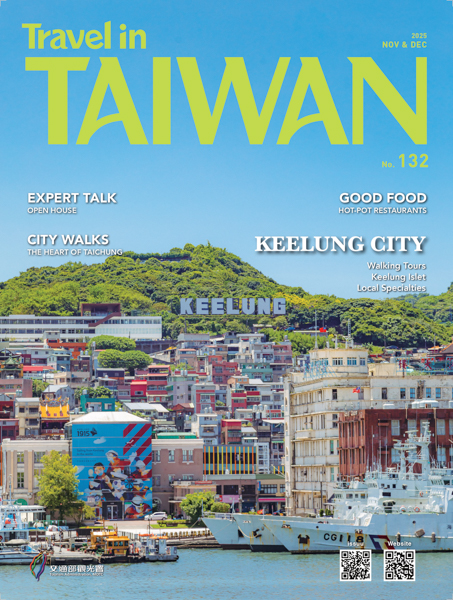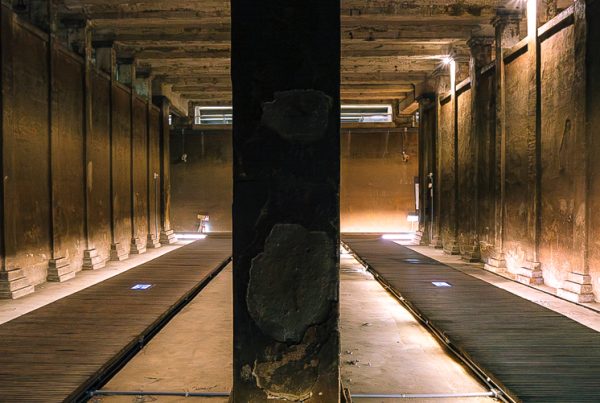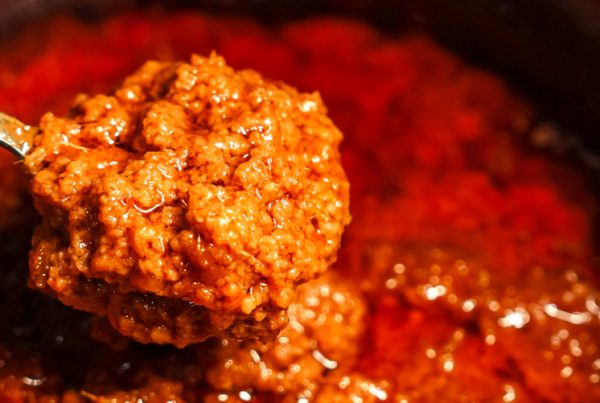Small Seaport City with Big Rep for “Small Eats”
TEXT | RICK CHARETTE
PHOTOS | VISION
Compact Keelung City is the dividing point for Taiwan’s North Coast and Northeast Coast regions. Local folk love using the quick and convenient commuter train service to zip from Taipei to the Keelung Railway Station, located right by the busy main harbor, for day trips. Why go to Keelung? Stunning ocean views, heritage attractions such as old cannon emplacements on hilltops, and rail-bike rides on an old mining-use line – and food, food, food! – especially at the bustling traditional markets. Miaokou Night Market is the most illustrious name, a short walk east from the railway station. In this article, we introduce three of Keelung’s most iconic snack foods, known as “small eats” in Chinese.
Jigula
What in the world is a jigula? Here’s a quick dive into the local jigula world.
Wherever you go along the Keelung shoreline, you’ll see fishing boats large and small out on the water, near and far. The two most tourist-visited fishing harbors are Zhengbin Fishing Harbor and Badouzi Fishing Harbor – the narrow deep-water harbor before the railway station is for ships.
No surprise, then, that just-brought-in seafood is front and center on the Keelung buffet table. Jigula is a type of fish cake cooked on a charcoal grill. Fresh, lightly seasoned fish paste is formed around a steel rod, giving it a tube shape, and is then grilled. This results in a smoky flavor and delightful light-crispy “skin.” The paste is most commonly made from fresh-catch flying fish, sailfish, or shark. Usually eaten in the tube form, it’s also sliced up and pan-fried, and used as a unique flavor addition to stir-fries and soups. Miaokou Night Market’s offerings are delicious, but jigula aficionados believe the very best are the very freshest – right at the sides of fishing harbors. Recommended is Zhengbin Fishing Port, famed for its picturesque pastel-colored harborside houses, easy to get to from the railway station by local bus.

Jigula, a transliteration of the food’s Chinese characters, is an approximation of Japan’s chikuwa, a similar type of tubular fish-paste cake. Another example of the Taiwan taste for Japanese food items is the local version of tempura, the name bastardized as tianbula. Japan ruled Taiwan from 1895 to 1945 and introduced the tubular-cake preparation method after seeing that Taiwanese fishermen generally did not use shark meat, only the fins. The seasoning is used because shark meat has a very light, mild taste. The jigula preparation process is very labor-intensive; thus, you’ll find the number of sellers limited in comparison to other iconic snack delicacies, making your special Keelung-trip experience all the more precious.


Pork Liver Sausage
Walking out of Keelung’s railway station, it’s hard to think of pigs and pork. There’s little flat land, high hills crowding in around the harbor. Urban build-up takes up pretty much all space in between. Nevertheless, on the Taiwan foodie culinary map is the city’s iconic “three sausages,” and no, processed marine catch features nowhere in the mix. The three are the pork liver sausage we’ll spend time with here, called zhugan chang, a type of glutinous-rice sausage called dachang quan, and an egg sausage called dan chang.

Differing from the usual liver sausage, most often created using a liver paste, Keelung’s unique pork liver sausage is made with cubes of marinated pig liver and diced pork, producing a rich and savory flavor with a distinct liver tinge and a unique texture of initial mild chunkiness that quickly transforms to tender, silky smoothness. It’s believed the Keelung delicacy is a rendition of the pork liver sausage of China’s Guangdong, learned from transplant Cantonese chefs, but with a lighter, slightly sweeter taste.

Production is laborious, done by hand, and as a result, the number of Keelung sellers – primarily small shops and market vendors – is slowly shrinking. As a rule, the sausage is first steamed and then roasted or grilled, bringing a smoky zest to the casing. Use of a dipping sauce is the custom – most sellers have their own “secret recipe” variation, many of which are spicy and possess a tinge of citrus. This balances the richness of the meat. Vendors insist on utilizing only the freshest ingredients and use no preservatives, and will remind customers to eat the sausages within six hours or so. Some of the best-known sellers are on short Xiao 3rd Road, near the railway station, north end looking at the harbor, and at the two-story Ren’ai Market, a little further to the east.
Nutritious Sandwich
Ah, the tantalizingly named Nutritious Sandwich. Before taking a step further, clarification – this creation ain’t necessarily so nutritious, but it most assuredly is delicious. Now found all around Keelung and all of Taiwan, this calorie-rich delight originated at Miaokou Night Market. What you get is an elongated, oval-shaped wheat bun of happiness that’s been deep-fried, crafting a golden-crispy skin and soft, mildly chewy interior. Stuffed into the middle cut running lengthwise are a variety of yummy things.

Just what yummy things, you’re no doubt wondering. What’s key here is that the sandwich has so many fans not because it brings nutritional value to the table, but because it has a uniquely satisfying medley of textures and flavors. The chewy bun has a light sweetness. The de rigueur ham used is savory, as are the slices of soy-sauce-braised boiled egg. Tomato and cucumber slices are fitted in to add a gentle crunchiness. And to help things slide down the gullet nice and easy, a generous helping of mayonnaise is used, lightly sweet, creamy, and rich. Note that many sellers will try to differentiate their offering with a variation of the ingredients or sauce. Be sure to get yours fresh-made hot – the texture of the bread changes quickly with cooling, so you won’t be experiencing the “real thing.”

The sandwich entered the culinary world in the 1950s (some say in the 60s), at a time when there was a pronounced US military presence on the island. Sandwiches not being a known commodity with the Taiwan diner, an entrepreneurial Miaokou vendor created his best take on this iconic Western quick-prepare snack to attract US forces personnel, and voila! a miracle appeared on par with Vietnam’s French-culture-nodding, baguette-built take on the sandwich, banh mi. The use of “nutritious” arose from government marketing benefits to promote wheat foods, then largely unfamiliar to the rice-familiar Taiwan public; wheat flour had been introduced in quantity starting in 1950 as part of US aid efforts.








